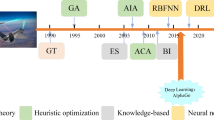Abstract
Drift parking usually requires precise control of a vehicle by a professional driver, which can reflect the performance of the vehicle under critical conditions. The obstacles to implementing this action include the high coupling between the longitudinal and lateral states, the high precision required for the vehicle initial state when the drift is triggered, and the difficulty in determining the reference state variables in the drift process. A two-segment drift parking control system is proposed in this paper. In the approaching control segment, the vehicle achieves the drift-triggered vehicle speed and pose, which relies on a path-tracking algorithm based on linear time-varying model predictive control. In the drifting control segment, the deep reinforcement learning algorithm twin-delayed deep deterministic policy gradient is creatively introduced to the controller design. It solves the precise vehicle motion control problem under the condition of the rear wheels having locked brakes. Through various simulations, the superiority and robustness to different initial conditions and abrupt changes in the parking space are verified. The effectiveness of the proposed control system is verified by a ground test.
Similar content being viewed by others
References
Goh J Y, Gerdes J C. Simultaneous stabilization and tracking of basic automobile drifting trajectories. In: Proceedings of IEEE Intelligent Vehicles Symposium (IV). Gothenburg, Sweden, 2016. 597–602
Nakano H, Kinugawa J, Kosuge K. Control of a four-wheel independently driven electric vehicle with a large sideslip angle. In: Proceedings of IEEE International Conference on Robotics and Biomimetics (ROBIO). Bali, Indonesia, 2014. 265–270
Hindiyeh R, Christian G. A controller framework for autonomous drifting: Design, stability, and experimental validation. In: Proceedings of ASME Dynamic Systems and Control Conference/Bath/ASME Symposium on Fluid Power and Motion Control. Arlington, VA, 2014. 901–908
Zhang F, Gonzales J, Li S E, et al. Drift control for cornering maneuver of autonomous vehicles. Mechatronics, 2018, 54: 167–174
Gonzales J M. Planning and control of drift maneuvers with the Berkeley autonomous race car. Dissertation for the Doctoral Degree. Berkeley: UC Berkeley, 2018
Silva M, Garrote L, Moita F, et al. Autonomous electric vehicle: Steering and path-following control systems. In: Proceedings of 16th IEEE Mediterranean Electrotechnical Conference (MELECON). Hammamet, Tunisia, 2012. 442–445
Kolter J Z, Plagemann C, Jackson D T, et al. A probabilistic approach to mixed open-loop and closed-loop control with application to extreme autonomous driving. In: Proceedings of IEEE International Conference on Robotics and Automation (ICRA). Anchorage, AK, 2010. 839–845
Peng B, Sun Q, Li S E, et al. End-to-end autonomous driving through dueling double deep Q-network. Automot Innov, 2021, 4: 328–337
Liang Y, Li Y, Yu Y, et al. Path-following control of autonomous vehicles considering coupling effects and multi-source system uncertainties. Automot Innov, 2021, 4: 284–300
Lin X, Zhou B, Xia Y. Online recursive power management strategy based on the reinforcement learning algorithm with cosine similarity and a forgetting factor. IEEE Trans Ind Electron, 2021, 68: 5013–5023
Martinez-Marin T. A reinforcement learning algorithm for optimal motion of car-like vehicles. In: Proceedings of 7th IEEE International Conference on Intelligent Transportation Systems. Washington, DC, 2004. 47–51
Gómez M, González R, Martínez-Marín T, et al. Optimal motion planning by reinforcement learning in autonomous mobile vehicles. Robotica, 2012, 30: 159–170
Kang D H, Bong J H, Park J, et al. Reinforcement learning strategy for automatic control of real-time obstacle avoidance based on vehicle dynamics. J Korea Robot Soc, 2017, 12: 297–305
Li G, Yang Y, Li S, et al. Decision making of autonomous vehicles in lane change scenarios: Deep reinforcement learning approaches with risk awareness. Transport Res Part C: Emerg Technol, 2022, 134: 113452
An H I, Jung J. Decision-making system for lane change using deep reinforcement learning in connected and automated driving. Electronics, 2019, 8: 543–556
Gheisarnejad M, Khooban M H. An intelligent non-integer PID controller-based deep reinforcement learning: Implementation and experimental results. IEEE Trans Ind Electron, 2021, 68: 3609–3618
Ichikawa I, Ushio T. Application of reinforcement learning to adaptive control of connected vehicles. Nonlinear Theor Its Appl IEICE, 2019, 10: 443–454
Fujimoto S, Hoof H V, Meger D. Addressing function approximation error in actor-critic methods. In: Proceedings of 35th International Conference on Machine Learning (ICML). Stockholm, Sweden, 2018. 2587–2601
Chen L, Qin D, Xu X, et al. A path and velocity planning method for lane changing collision avoidance of intelligent vehicle based on cubic 3-D Bezier curve. Adv Eng Software, 2019, 132: 65–73
Huang Y, Ding H, Zhang Y, et al. A motion planning and tracking framework for autonomous vehicles based on artificial potential field elaborated resistance network approach. IEEE Trans Ind Electron, 2020, 67: 1376–1386
Yu Z, Zhang R, Xiong L, et al. Steering angle control of steer-by-wire systems considering nonlinear characteristic and uncertainty parameters (in Chinese). J Tongji Univ, 2017, 45: 79–86
Milliken W, Milliken D. Race Car Vehicle Dynamics. Warrendale, USA: SAE International, 1994. 57–58
Leng B, Jin D, Xiong L, et al. Estimation of tire-road peak adhesion coefficient for intelligent electric vehicles based on camera and tire dynamics information fusion. Mech Syst Signal Processing, 2021, 150: 107275
Author information
Authors and Affiliations
Corresponding author
Additional information
This work was supported by the National Key R&D Program of China (Grant No. 2021YFB2501201), the National Natural Science Foundation of China (Grant No. 52002284), and the Young Elite Scientists Sponsorship Program by China Association for Science and Technology (Grant No. 2021QNRC001).
Rights and permissions
About this article
Cite this article
Leng, B., Yu, Y., Liu, M. et al. Deep reinforcement learning-based drift parking control of automated vehicles. Sci. China Technol. Sci. 66, 1152–1165 (2023). https://doi.org/10.1007/s11431-022-2273-5
Received:
Accepted:
Published:
Issue Date:
DOI: https://doi.org/10.1007/s11431-022-2273-5




